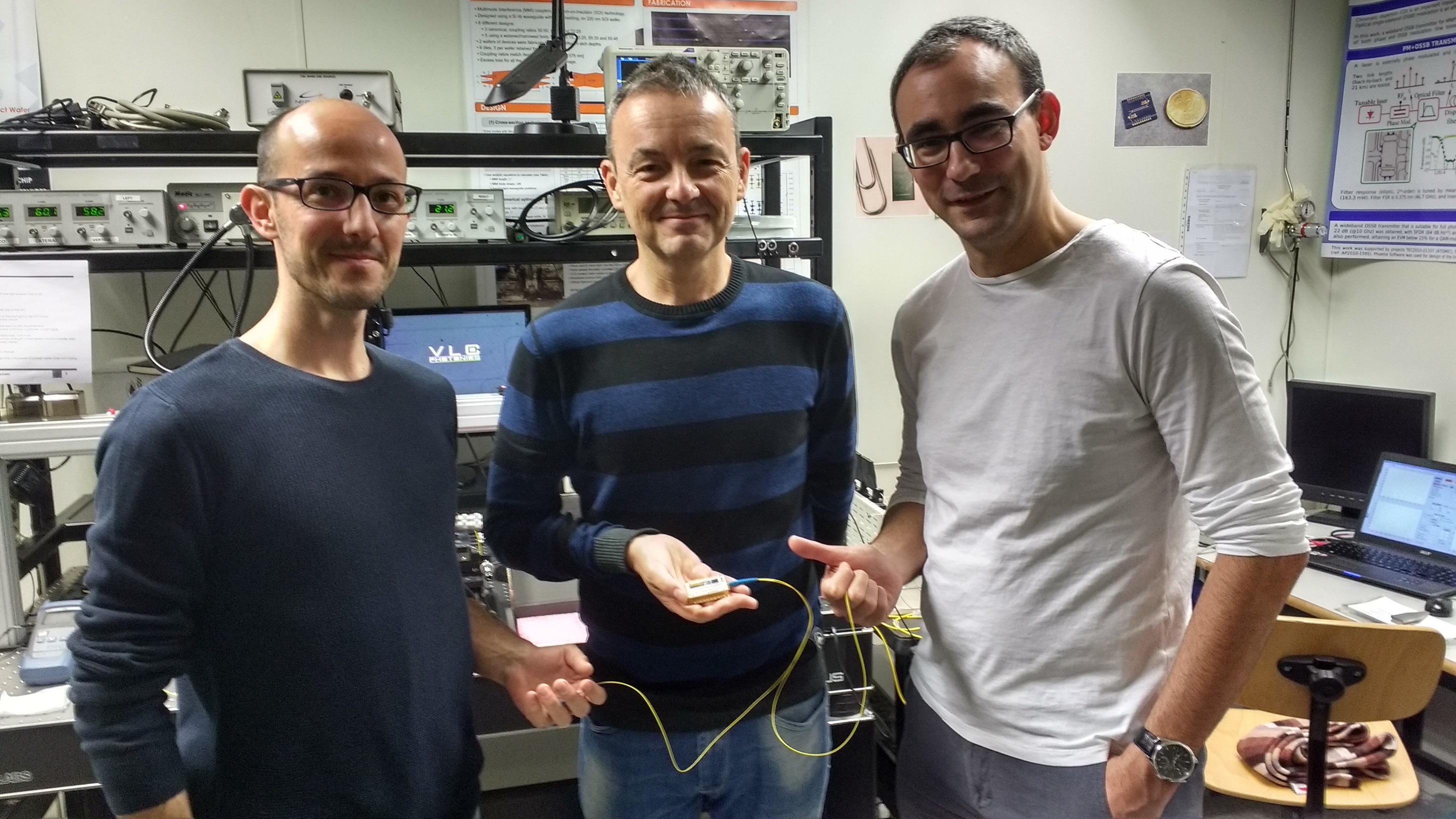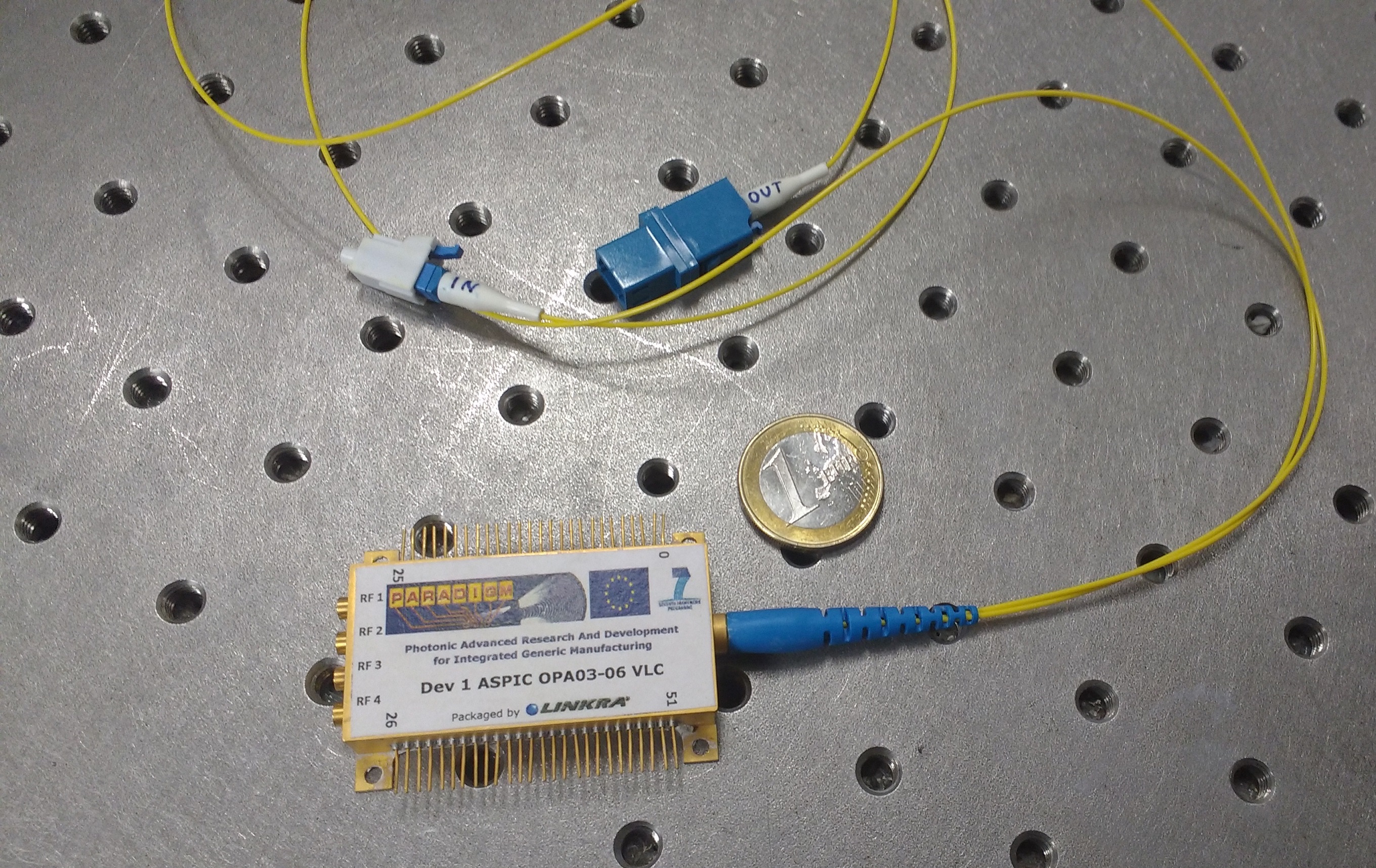Researchers at
the Photonics Research Labs of the Institute of Telecommunications and Multimedia (ITEAM) and its spin off company VLC
Photonics have designed a novel and pioneering microwave photonic chip that
includes all the necessary components for its operation: laser, modulator,
filters and detectors.
José Capmany,
iTEAM researcher and Project coordinator,
explains that “this is the first time that a full monolithic chip is reported in the
field of Microwave Photonics. The chip works with input and output
radiofrequency signals but these are internally converted to photonic signals
for agile and reconfigurable processing.
The key towards
the integration of all the required components in the chip relies on the use of
Indium Phosphide as a fabrication platform. This semiconductor material allows
the growing both of active and passive photonic components. The results of this
research have been published in Nature Photonics.
One of the
main advantages of this chip is the potential reduction in fabrication costs,
operation and power consumption. With
respect to these, iTEAM researcher Pascual Muñoz states that if you have to assemble
each component separately, each one requires a particular stabilization
mechanism, an individual power consumption scheme and requires a certain amount
of space. However, if
one integrates all the components in the same monolithic chip then all these
individual requirements can be handled in an integral way thus easing and
optimizing the fabrication process and its costs. In addition, Muñoz outlines
that this new monolithic chip brings unprecedented reconfiguration
capabilities over a wide frequency range.
With respect
to applications, UPV researchers point out several fields such as mobile
communications, autonomous driving, distributed sensors, the Internet of
Things, defense and surveillance and avionics. In general, they point out that
this new chip is a significant step for any application field where high
frequency wireless signals have to be interfaced with optical fiber links.
As VLC
Photonics researcher David Domenech points out, for example in autonomous
driving data from RF sensors needs to be continuously received and processed
inside the vehicle. On another hand the chip would also enable the Access to
internet inside aero planes by using it to interface the internal optical fiber
bus with a RF antenna array placed on the fuselage.
The design and
demonstration of this chip has been carried within the framework of the European
project Paradigm, funded by the European Union.


